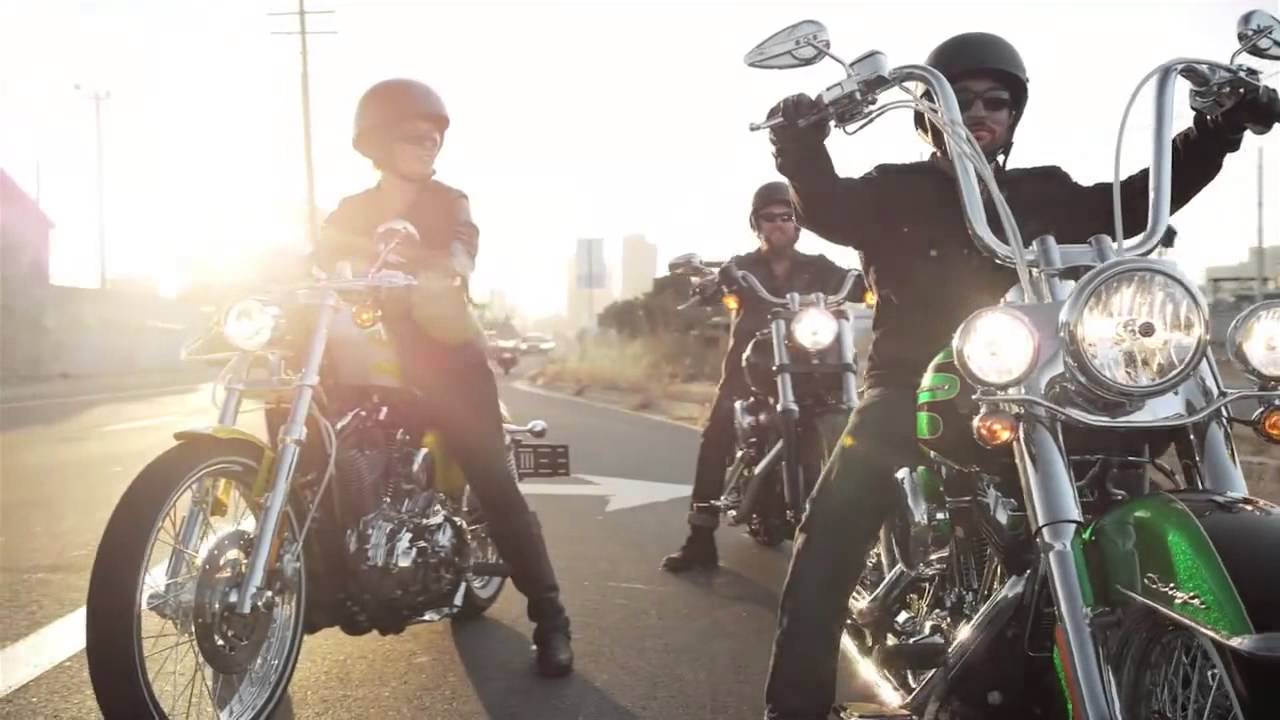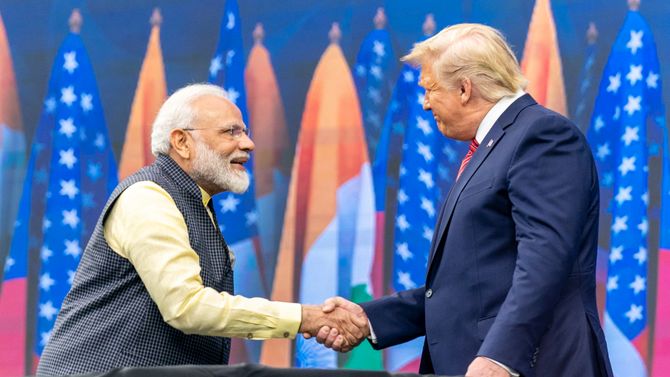Trade distortion and protectionism
America's favorite hog is driving US-India trade relations
Published 21 February 2020 | 3 minute read
A couple of years ago, the Fat Boy Arnold Schwarzenegger rode in Terminator 2 sold at auction for more than half a million dollars.
American icon in a global market
The bike’s on-screen presence with Arnold cruising in a black leather jacket and Italian Persol sunglasses fueled a run on the bike back in the early 1990s. Maker Harley-Davidson just released a 30th anniversary limited edition Fat Boy. Harley-Davidson bikes have been an American icon for more than 100 years.
With a classic foundation story, starting out of a small shed in Milwaukee, Wisconsin in 1903, the company and its bikes are a stand-in for the American ideal of freedom and strength, its brand recognizable across the world. Harley-Davidson weathered the Great Depression, two World Wars and the financial tsunami in 2008 to emerge as a “great American company,” as noted by U.S. President Donald Trump in 2017. The company is focused on nurturing a new generation of riders who include young, female — and global — enthusiasts. Expanding its portfolio of motorcycle offerings for global appeal, it has set a goal to grow its international business to 50 percent of annual revenue by 2027.
Taken for a tariff ride
Harley-Davidson bikes enjoy a well-earned prestigious reputation around the world and the price tag reflects it. Adding to its price, many countries also impose high tariffs on imported two-wheelers. In fast-growing Asia, tariffs range from 20 percent in Taiwan to 30 percent in China, 60 percent in Thailand, and 100 percent until recently in India.
Facing a declining U.S. consumer base and eyeing growing markets in Asia, Harley-Davidson is working to expand its sales particularly in South and Southeast Asia. U.S. tariffs have thrown a monkey wrench into those plans. The Trump administration’s tariffs on imported steel and aluminum would add some $40 million in domestic production costs, according to the company. Making matters worse, the European Union retaliated by increasing the tariffs on U.S. motorcycles from 6 percent to 31 percent, adding an average $2,200 to the cost of a Harley-Davidson bike exported to Europe. If the steel tariff dispute isn’t resolved, Europe has threatened to raise the tariff in 2021 to 56 percent. Harley-Davidson, like so many other companies, hastened production expansion in overseas plants to mitigate costs from the tariff war, a strategy the company undertook in India more than a decade ago.
The largest motorcycle market in the world
India‘s auto industry is regarded as one of the fastest-growing in the world. In 2018, India produced over 29 million vehicles (including passenger vehicles, commercial vehicles, three-wheelers and two-wheelers).
The two-wheeler category leads the Indian automobile market with 80 percent market share due to a growing middle class and a young population. India is now both the largest two-wheeler consumer market and the largest manufacturer of two-wheelers in the world. There are an estimated 170 million motorcycles, scooters and mopeds on the roads today in India. But until 2007, Harley-Davidson was denied access to the Indian market.
Mangoes for motorcycles
In 2007, President George W. Bush struck the so-called “mango deal” with India, which allowed Harley-Davidson to sell its bikes in India in exchange for the end to an 18-year-ban on imports of Indian mangoes to the United States. The deal was signed a year later by then-U.S. Trade Representative Susan Schwab and Union Commerce and Industry Minister Kamal Nath. The mango deal allowed Harley to invest in India and permitted imports of Harley-Davidson bikes with an engine capacity of 800 cc or above if it complied with Euro-III emission norms. But India remained firm it would not lower its 100 percent tariff on motorcycle imports, which continued to deny Harley-Davidson effective access to the Indian market for its bikes completely built in the United States.
In August 2009, Harley-Davidson announced plans to enter the market in India through a subsidiary and started assembly operations in 2011 in a plant located in in Bawal in Haryana state using parts imported from the United States. Through a complicated tax system, imported motorcycle parts face around a 39 percent tariff. India-built Harley-Davidson motorcycles are also exported to Europe and Asia.
Too much for Trump
Whether standing on the factory floor in Wisconsin or making a State of the Union speech, President Trump frequently complains about India’s 100 percent tariff on Harley-Davidson bikes as a sticking point in U.S-India trade relations.
In February 2018, the Indian government responded by lowering the custom duty on fully-built imported motorcycles from 100 percent to 50 percent. However, since Harley-Davidson assembles 12 out of its 16 models in India for domestic consumption, most of its bikes won’t be subject to the 50 percent tariff either. In a media interview with an Indian newspaper, Peter MacKenzie, Managing Director of India & Greater China for Harley-Davidson was quoted saying, “We don’t see any significant impact. Yes, there is a reduction in custom and any cut is always welcome. However, a large portion of our portfolio is locally produced.”
Beyond trade wars and tariffs, one of Harley-Davidson’s biggest issues is consumer preferences for smaller and cheaper motorcycles in Asian markets like India. The company plans to develop a more accessible, small-displacement motorcycle (250cc to 500cc) to increase sales in India and other Asian markets, but for now the country’s vast middle-income group generally prefers less expensive bikes that sell for between $1,000 and $1,500, about eight times less than a Harley-Davidson. The smaller bikes are more adept at navigating narrow, pot-holed streets choked with thousands of other bikes.
Big hog, small trade deal
President Trump is scheduled to go to India at the end of February and he wants to sign a trade deal with India’s Prime Minister Modi. Right now, the deal appears narrowly focused on addressing U.S. complaints regarding lack of access for the U.S. dairy and medical technology industries in exchange for the U.S. restoring India’s tariff benefits under the U.S. Generalized System of Preferences and removing India from countries hit by U.S. tariffs on aluminum and steel. India might also ratchet back the tariff hike it imposed last year on high-value farm imports such as almonds, walnut, apples, and wine, among 29 other items.
As in Terminator 2, next week is judgement day. If Modi says “Hasta la vista, baby“ to President Trump’s request to eliminate or lower the tariff on Harley-Davidson motorcycles, Trump is likely to say, ”I’ll be back.“
Image credit: 2020 Fat Boy® 114 on harley-davidson.com
© The Hinrich Foundation. See our website Terms and conditions for our copyright and reprint policy. All statements of fact and the views, conclusions and recommendations expressed in this publication are the sole responsibility of the author(s).





